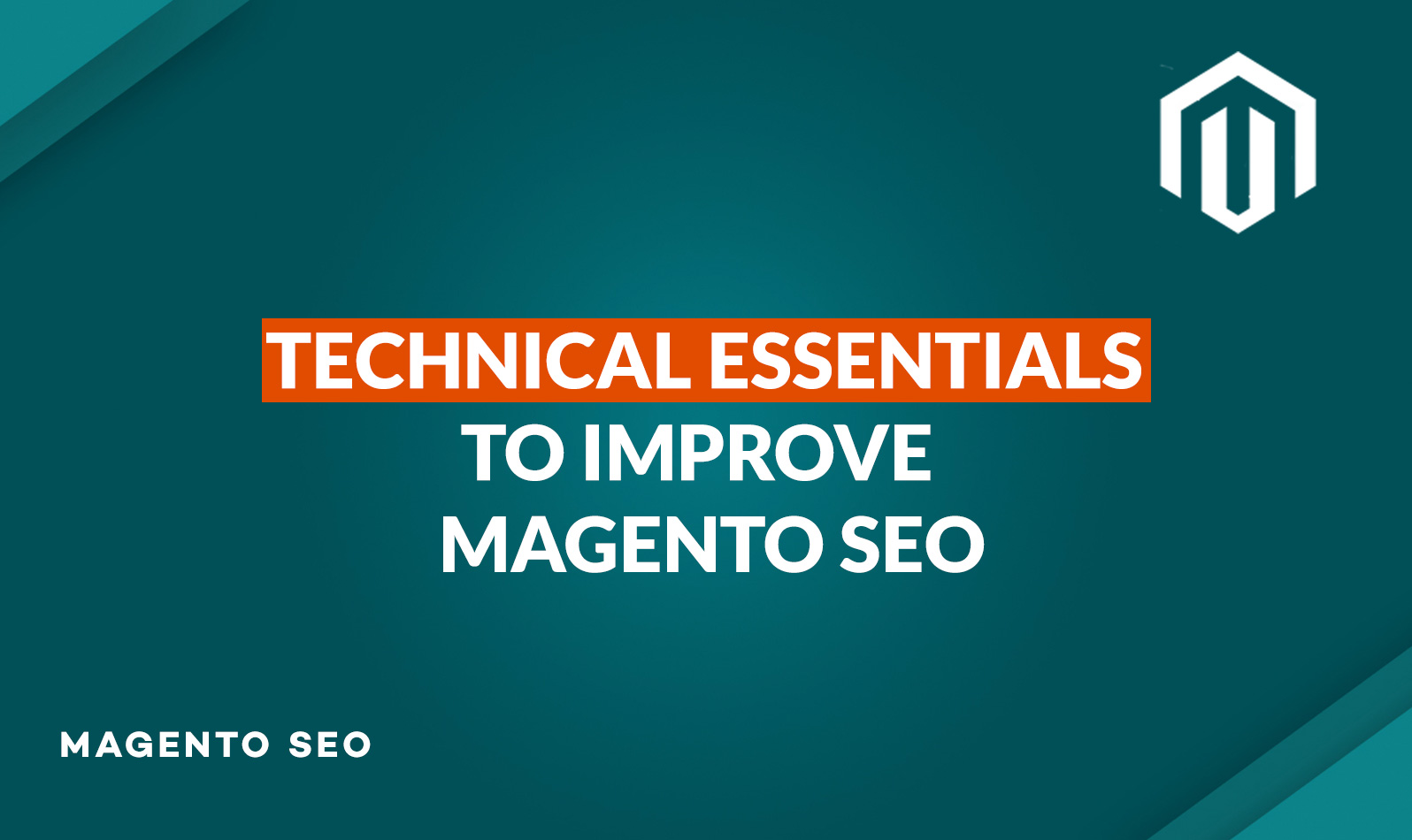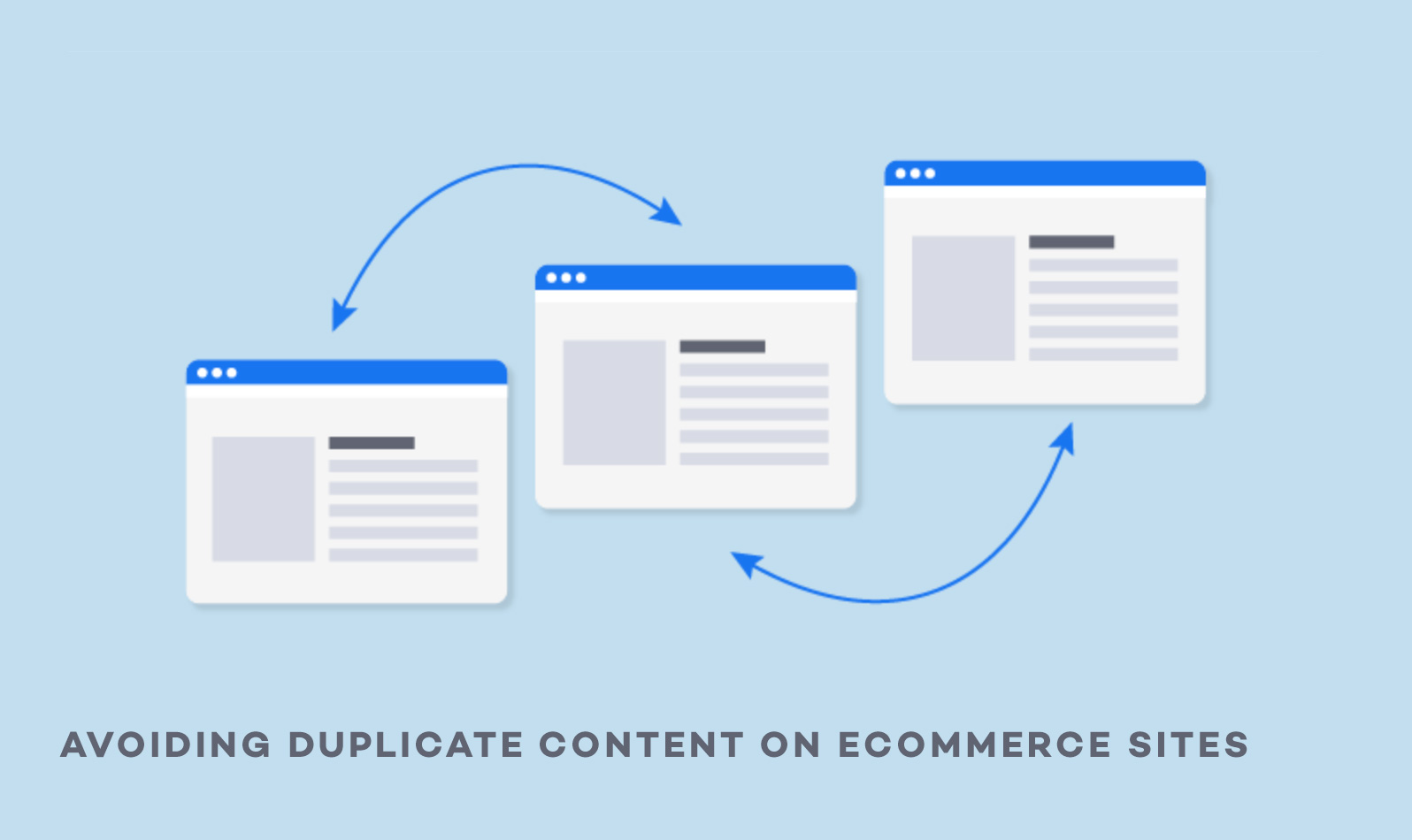
Whether you are an established eCommerce business or a new start up the importance of ranking well in organic search cannot be overstated. With 74% of all website visits starting with search getting on the first page of the results can be make or break for an online store. Many stores take the short cut and go for Google Ads and Bing paid search to appear in the search results. Google’s own benchmark click through rates for paid adverts are 2% to 5% depending on industry, which means that a whopping 95-98% of searchers are not going to click on your advert! The other factor is cashflow and business building – a brand new Magento Ecommerce website, even if it is perfectly built is not going to get really strong organic rankings until it has built domain authority from inbound links. Some entrepreneurs aren’t prepared to wait, but then end up not ever working on their organic search at the detriment of the business. Don’t let your Magento website’s SEO flounder, beat your competition by dominating organic search!
Magento Technical SEO at Start Up or After Build?
While it might be obvious to get the technical SEO parts of your Magento website great for launch, budget and time constraints often mean that it get’s pushed back to a post-launch activity. Even if you think that your established Magento site has perfect technical SEO it is worth reviewing the detail as your site will have grown and evolved since launch and Google’s Algorithm is also evolving so it should always be seen as an ongoing activity.

SEO for Ecommerce Sites Vs Other Websites
It is important to understand both the similarities and differences between optimising ecommerce websites compared to other types of websites. In terms of similarities:
Universal SEO Factors:
- Domain authority from inbound links, factoring in quality, relevance as well as quantity is a universal ranking factor regardless of website type.
- Technical website health vital to high rankings for competitive terms
- Quality, authenticity and depth of content vital for good rankings
- Slow websites and mobile unfriendly websites simply aren’t acceptable if you want to rank well in organic search
Specific Ecommerce SEO Challenges:
- Large numbers of often similarly described products & therefore similar pages.
- Often a deep and complex hierarchy of content because of product groupings and categories
- Multiple ranking challenges – appearing for broad category level organic terms and also appearing for product specific search terms
- Product set, and therefore pages, frequently changing needing frequent re-indexing of content
As you can see some of the unique challenges of SEO for ecommerce sites in general come from the volume and type of content that these sites are trying to rank for. With the technical underpinnings of a website vital to achieve SEO nirvana it is good to know that with Magento websites you have the help of being able to employ off-the-shelf extensions that plug into a site to provide next level functionality which in other platforms you would have to pay for expensive customisation to achieve.

Sitemaps for your Magento Ecommerce Site
When Google crawls your website it follows the links from one page to another to build up a full picture of the website. So you might ask why you see links to sitemaps in footers on websites and why people talk about the need for a sitemap.xml file. Surely if Google follows the links on your site it doesn’t need this? Wrong. You will rank much better if you have properly created and updated sitemaps.
The difference sitemaps make to ecommerce websites
As seen in the differences between SEO for ecommerce and other websites one of the challenges is the number of products and frequency of change. Google does not index your website every visit. It has a crawl budget. The Googlebot has to ration its finite resources so it focuses on the highest pages in your website’s hierarchy and then selects others to index periodically. As Googlebot will always check out a sitemap.xml file this file will tell Googlebot of both changed pages and new pages. This is because a properly constructed sitemap contains information about when the page was last modified, as well as its full URL. It then knows to go and index those new and changed pages and those linking to it. So if you don’t have a properly updating sitemap Google does know to find your new products or updated category pages and it doesn’t rank them.
You could also have pages that are orphaned in that they are not being actively linked from another page, but you still might want them to be found in the index. A sitemap allows Google to go and find these pages which it would not otherwise be able to do from internal linking alone.
The sitemap also presents Googlebot with a hierarchy of the website because of the way a good sitemap is structured. The rankings of a single page on an ecommerce website are not defined solely by that page’s content, the way that page forms part of a wider ecosystem of content about a search term impacts ranking. This is referred to more later in this article in relation to undefined URLs. A sitemap can tell Google that a particular page sits on the top of a pyramid of content about a subject and therefore it will be seen as the most important page about the subject. In this way you have just boosted your organic rankings for the top page.
Creating a sitemap for a Magento website
Magento has a sitemap generation function but it does not have the controllability an SEO professional needs. You can make manual edits to a sitemap but these things are best automated. A good tool will generate the sitemap files within set parameters so you don’t need to remember to update the sitemap every time you add or edit or remove a product – yes, you need to update the sitemap when a page is removed or Google will not like your site and that harms rankings!
As using an automatic sitemap generator is a no-brainer for improving the organic rankings of your Magento website it is no surprise that it is one of our most popular Magento Extensions. If you want to read the detail of it go to our Magento Sitemap Generator Extension page or if you are on Magento 2 visit the Sitemap Generator Extension For Magento 2 and all the details are there.
Avoiding Duplicate Content on Ecommerce Sites
Duplicate content is a common occurrence in e-commerce stores. This often happens when a product needs to appear in multiple categories, for example with unisex products, as they have to be listed under male and female. As the URL of the page is often created from the path that the consumer takes to the product, the URL of the page is different, but the page content itself is identical.
Why Duplicate content is harmful to eCommerce SEO
To the uninitiated two pages or more pages with the same content but different URL means nothing, at least the consumers don’t complain about this. However, duplicate content has a negative impact on SEO as Google wants to avoid websites having lots of repetitive content on a specific subject to try and boost it’s rankings.
Avoiding duplicate content is also to ensure that a single URL is the focus for ranking a keyword on a website. This is especially a problem on category pages where there is pagination. The you want the category page to rank highly for some keywords, but because there are lots of products there has to be pagination for the consumer to go through the whole listing conveniently. This generates multiple URLs for the same category page on your ecommerce site. If you don’t deal with this issue you won’t rank well in organic search. This is because even though the products shown in the listing on each page are different, making each category page slightly different, they are not different enough. If you are not penalised for duplicate content you will suffer from what SEO professionals refer to keyword cannibalisation.
How to solve duplicate & similar content issues on eCommerce sites?
You can manage the duplicate and similar content issues on your website by using system of canonicalization which utilises HTML mark-up called canonical tags.
What are canonical tags?
Canonical tags were developed to help the search engines spiders (the bots that crawl websites) understand when they reach a page whether this page is the page that should be indexed or if it is a duplicate of another page. In this way you can manage issues around duplicate and similar content by using these tags to point the crawlers to the original content and therefore mark pages with other URLs as ones that should not be included in the indexing process. Note that they should not be confused with HREFLANG tags which point the search engine crawlers between different language and regional variations of the same pages.
In this way they play a major part in SEO on an ecommerce website with anything other than small product catalogues. It is vital to manage issues by products appearing in multiple categories and pagination if you want the site to rank well.
How to add Canonical tags
While it is theoretically possible to add these manually, if you need to use them then you should automate the process so it is not only fast but crucially correct and robust as the site and your product catalogue changes.
Again custom coding options may be presented to you, but it is better to choose a tried and tested extension for Magento that will allow you to manage this properly. When choosing your extension to do this make sure that it has the flexibility and power that you need to control these canonical tags fully as you need to have the power to decide which page you want ranking! Check out our Canonical Tag Extensions for Magento 1 and Magento 2 and read the full description for more information.

Rich Snippets for Ecommerce
Rich snippets are additional information that are displayed on the search results pages as part of the listing for a page. The standard information that a search result has is the Page Title, The URL of the page and the meta description (or a variant of this and page content which Google decides this).
Rich snippets provide the users with additional information without them having to visit the actual website, for example times a film may be on at the cinema, which is why Google likes them so much. If Google likes you to do something and you do it, you will rank better as a general rule. However, the benefits of rich snippets don’t stop there. By displaying more information your result is bigger and looks more impressive and you get a higher click through rate and therefore more traffic to your website. MOZ has estimated this impact to be as much as a 20-30% improvement. Implementing Rich Snippets is therefore another important way to boost your organic traffic results.
eCommerce Listing Without Rich Snippets

eCommerce Listing With Reviews Rich Snippet Showing

Importance of Review Rich Snippets for Ecommerce
The review rich snippet is probably the most important one to display as it not only has a noticeable impact on ranking, but a positive rating for a product is very likely to stimulate a searcher to click through to your website. It also demonstrates ‘social proof’ in that other people like the product, human’s naturally feel more comfortable buying where there is the presence of social proof than without.
How to implement rich snippets on Magento
There is the manual process and the automated way. The manual process requires you to mark up the HTML with Schema.org mark-up data. This not only takes some figuring out how you are going to do it, but then it needs to be applied across the site. Inevitably any professional ecommerce website automates this; either through custom development work or by using an off the shelf extension. The latter having already had much development and testing invested in it should be more robust and feature rich, and certainly far less costly that implementing using a custom code solution.
Our rich snippet extension has been developed over time with the help of SEO experts which has helped make it vastly popular in our Magento extensions store. It is available to create rich snippets in Magento 2 as well as for Magento 1.
Undefined Ecommerce Store URL structure
A significant percentage of new e-commerce websites (even old) have URLs that are undefined. By undefined, we mean URLs with texts/characters that do not have any relationship with the product or do not show users the category the product is domiciled. For example https://www.yoursite.com/category2/product-code-123456.html
A URL like this tells both the user and Google nothing about the category the product is part of and the product itself. Far better to use a URL like:https://www.yoursite.com/dog-bowls/brown-china-dog-bowl.html
This includes keywords within the URL for search engines and helps the user.
What is the solution to undefined URLs
Define your URLs to indicate the content of the page and the subcategory it belongs – Simply put, Implement SEO catalog URL.
How to implement SEO catalog URL
You can do this manually or make use of a software, whatever appeals to you. Keep in mind that using a software saves time and eliminates human error, while a manual process can falter when things get complicated and is a major time sink. As with most of these technical SEO implementations for complex ecommerce websites, the automated approach is best – save your time and brain power for activities that truly need manual input.
Basic SEO Catalog Rules
Following these rules when publishing a page on your website should help you define your URL and set a primary category for your products.
- Keep URLs simple – it should only contain relevant information (including keywords, but not words like ‘and’ and ‘the’)
- Make it definitive – Searchers (including Google bots) should be able to read your URL and have a good idea of what is in the page
- Use lowercases – Using lowercase letters is recommended to avoid issues of duplicate content. For example, 2572495e08.nxcli.net/blog and 2572495e08.nxcli.net/Blog will be mistaken for two different pages by Google both in indexing and in your Google Analytics data.
- Do not use URL parameters – URL parameters can also cause an issue of duplicate content. So you should avoid using them as much as possible unless they are properly canonicalized.
Benefits of SEO catalog URL
- Improves user experience – A URL that shows visitors the domain-category-subcategory-product flow is easy to understand and improves navigation. With a well-defined URL, visitors would know how to find their way to the previous page or navigate to another category.
- Improves Ranking – The same way an SEO catalog URL helps user experience so does it help Google’s indexing activity on your website. Google crawlers will be able to tell the content of a website from the URL. This makes crawling and categorisation easy.
Automated SEO catalog URLs
As you might expect we provide a specific Magento tool for SEO catalog URLs. This also forms part of the bundle of core Magento SEO extensions that we recommend every site deploy as a minimum if they are serious about organic search traffic and gaining more sales from this important traffic source.
Using a Marginal Gains Strategy to beat your competition in organic search
When it comes to Google ranking, the most dominant websites are websites that have not left any stone unturned. To get a better sense of the previous statement, picture Google’s first page as the destination of millions of racers. These racers are in a perpetual race for the first position and certainly the top 10, and they are making every effort to achieve it.
Obviously, Google cannot accommodate everyone on its first page, so competition is fierce. Just as a race can be won by the smallest margins; if you want to win in SEO you need to take every opportunity to be better than the competition.
British Cycling and the Sky Cycling Team popularised the Strategy of Marginal Gains. They looked at every little detail even if it could only improve speed / performance by a small fraction. The theory was that each little improvement adds up so together they will create enough difference to beat the competition. As a result of this strategy British Cycling went from nowhere on Olympic Cycling to the dominant team by 2008 and 2012 and Team Sky have delivered 3 different British Tour de France Champions since 2012, before then there had not been a single one for the previous 100 years.
If you think of SEO in the same way then you can beat your competition. In order to do this for your ecommerce website you need to cover a lot of bases. Google talks of there being more than a thousand ranking factors for a page: This means that there are a lot of opportunities but also a lot to work on. In these circumstances automation has to be embraced for both speed and accuracy.
The plus side of winning in organic search however is big. If you want to see just how big it is for your own Magento website go to SEMRush.com and put in a few of your main keywords that you want to be found for and it will return the monthly searches in your region on Google – now imagine how you business would be transformed if you were getting even just 10% of this traffic to your website each month – that is the upside of organic search – big financial returns.
More help on organic search rankings from Scommerce Mage
If you do want some specific help with your organic search engine rankings and how your Magento technical implementation can influence this please get in touch with the Scommerce Mage team. We also work with a number of external organisations as part of a comprehensive team to deliver business results on Magento websites.







